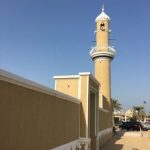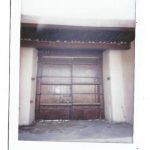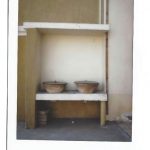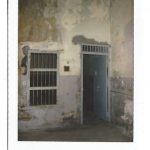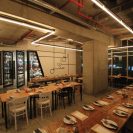I pull up in my taxi and I see the two tour buses comfortably nestled between the elegant AWARE Centre and a neighboring home. The group waiting outside is audibly excited and clearly just as eager to absorb some of the rich Kuwaiti heritage as I am.
As we pile on to the buses, couples chatter and strangers exchange names and stories about Kuwait. I feel almost stuck in a cultural time warp as I listen to these people talk about the day jobs they will be returning to the next day and the bus grinds to a halt in from on our first destination: the Al-Shamiya Gate, located on Soor street.
Although what remains of the gate spans less than 200 meters, the bespoke building materials have survived what can only have been almost 100 years of wind-battering and somehow stand tall next to the facing skyscrapers. As the crowd circles around the knowledgeable guide, we discover some of the more intricate, undocumented memories attached to this piece of Kuwaiti heritage. He takes us back to a time of togetherness, where people from all walks of life worked together to erect the 2km wall. Due to their dedication, the work was completed in two months, which – after observing the indicate embellishments adorning the perfectly crafted gate – is a grand feat in itself.
Shortly thereafter, we hop back onto the buses and the chat is even louder, with friendships forming and common interests being shared. One woman explains that this is her first tour in Kuwait. She’s definitely going to start going on a lot more after this one. Throughout the bus trip, our guide tells us tidbits of Kuwaiti culture and history, as we pass by significant monuments or spaces of interest. We pull up to the AlMana’ee Old Mosque, the second oldest mosque in Kuwait. The lemony tinge of the expertly shaped walls shines bright in the mid-morning Saturday sun and invites us in. We are told of an era before automated speakers where the call to prayer was sung from the towering minaret. As we pass through the threshold, a confortable open area greets us, from where we can appreciate the dome rising above us. Inside the [prayer area], a delicate smell suggests a preserved sense of antiquity and sacredness. Visitors climbed the spiraling staircase winding up towards the minaret to gain access to a unique view of the city and the mosque itself.
Our last destination is exclusively open to our tour and we were welcomed with open arms by our hosts at the Naif Palace. Upon entering the premises, a sense of neatness and serenity rises up from the flower-ringed greenery and the cream, perfectly pinned diwaniya tents. We are walked around the enormous expanse, circling a Kuwaiti flag, raised high and fluttering in the wind. A functional, fresh water well – although paved over for safety reasons – remains a feature of the palace. At the opposite end of the palace, the jail cells are contained. Upon entering the jail area, the timelessness of the monument struck us all, from the dates and offenses carved into the walls to the rusted doors that were heavy to open.
After a group photo to conclude the tour, we are invited by our host to indulge in some delicious savory snacks as were served coffee and tea in antique crockery. Comfortably munching on our sandwiches and sipping our delectable Arabic coffee, we looked around at the old-fashioned Kuwait flags, flanked by high-reaching towers and glinting windows of the Kuwait City skyline.


